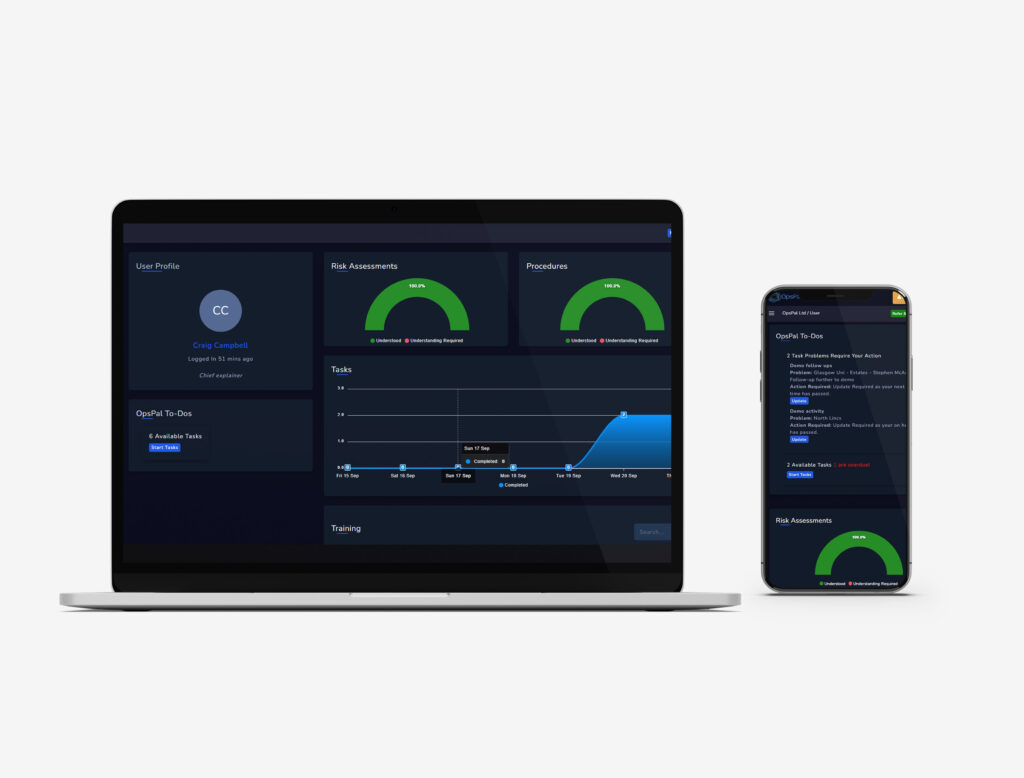Last Tuesday, I watched a duty manager pull three different versions of the same pool evacuation procedure from various locations around the building. One was dated 2019. Another had handwritten amendments in the margin. The third—the “current” version—was printed six months ago but already contradicted the updated fire assembly point.
Nobody could tell me which one was correct.
If this sounds familiar, you’re not alone. It’s the dirty secret of facility management that nobody wants to admit: your operations manual is probably lying to you.
Not intentionally, of course. But the moment you print a procedure, email a policy document, or laminate an instruction sheet, you’ve created something that will become outdated. It’s not a question of if, but when.
The Hidden Cost of Static Documentation
Here’s what actually happens in most leisure facilities. You spend weeks—maybe months—developing comprehensive operations manuals. Health and safety procedures. Emergency protocols. Cleaning schedules. Maintenance routines. Equipment checks. Customer service standards.
You get everything signed off. You distribute copies to all sites. You brief the team. Job done.
Except it’s never done, is it?
Three months later, you update your first aid protocol following new guidance. You send an email. You print new copies. But somehow, the old version stays pinned to the noticeboard in the plant room. The laminated sheet in the lifeguard office doesn’t get replaced. The PDF someone downloaded to their phone six months ago is still there, still being referenced, still completely wrong.
Multiply this across every procedure in your building, across multiple sites, over several years, and you’ve got a compliance nightmare hiding in plain sight.
The Version Control Spiral
The problem compounds itself. Once you’ve got multiple versions floating around, staff stop trusting any of them. I’ve seen lifeguards create their own “cheat sheets” because the official procedure was too confusing. Maintenance teams who work from memory because finding the current documentation is harder than just doing what they’ve always done. Managers who keep their own Word documents with the “real” procedures, never quite synced with what everyone else is using.
You end up with tribal knowledge replacing documented processes. Which works brilliantly until someone leaves, goes on holiday, or calls in sick. Then you’ve got a part-time team member frantically trying to work out what they’re supposed to do, with no reliable reference point.

When Outdated Procedures Create Real Risk
Let’s be clear about what’s at stake here. We’re not talking about minor inconveniences. Outdated procedures in leisure facilities create genuine safety and compliance risks.
Consider these scenarios:
Emergency evacuations: Your fire assembly point moved last year when you reconfigured the car park. Half your staff still direct people to the old location because that’s what their printed procedure says.
Chemical handling: Your pool plant supplier changed the dilution ratios for chlorine treatment. The laminated guide on the wall still shows the old measurements. Someone follows it, and you’ve got a potential incident.
Safeguarding protocols: Your organisation updated its safeguarding policy to include new reporting procedures. The procedure manual in the sports hall office is three years old. A staff member follows the outdated protocol during an incident, and your duty of care is compromised.
GDPR compliance: You revised your data capture processes to ensure compliance. The form template in the filing cabinet is the old version. You’re now potentially breaching data protection regulations without even knowing it.
These aren’t hypothetical risks. They happen. Often.
The “Update, Print, Distribute, Repeat” Trap
So you try to stay on top of it. You implement a review schedule. Every procedure gets checked annually. Any changes get printed and distributed immediately. You send emails reminding everyone to replace old versions. You add it to team meeting agendas.
And it’s exhausting.
You’re spending hours every month managing documentation that should be supporting your operation, not consuming it. Your managers are drowning in version control. Your staff are confused about what they should actually be following. Your auditor is raising concerns about consistency.
The problem isn’t your team. The problem isn’t lack of effort. The problem is that you’re trying to maintain dynamic operational information in a static format. It doesn’t work. It can’t work.
What Good Documentation Actually Looks Like
Here’s what operational documentation should do:
- Always current: When you update a procedure, everyone sees the change immediately. No printing. No distribution. No hoping people got the email.
- Single source of truth: There’s only ever one version. Staff can’t accidentally work from outdated information because outdated information simply doesn’t exist in the system.
- Accessible when needed: Your lifeguard needs to check the pool evacuation procedure at 6:00 on a Sunday morning. They pull it up on their phone. It’s there. It’s current. It’s the same version the duty manager would see, the same version that would be reviewed in an audit.
- Auditable: You can see who’s read what, when they read it, and whether they’ve acknowledged the latest version. No more guessing whether everyone got the message.
- Integrated: Your procedures link to your risk assessments, your task schedules, your training records. Everything connects. Nothing exists in isolation.
This isn’t theoretical. It’s how progressive leisure operators are working right now.

The Digital Operations Shift
Static documentation worked when operational changes were infrequent. It doesn’t work in 2025, when guidance updates regularly, best practice evolves constantly, and your facilities are expected to maintain rigorous standards across multiple sites with diverse teams working varied shift patterns.
Digital operations systems eliminate version control chaos. You update a procedure once. Everyone with access sees the current version immediately. Old versions don’t linger on noticeboards or in filing cabinets because they’re not physically distributed in the first place.
Staff can access everything they need from their phone, tablet, or computer. The leisure assistant starting their first shift can view the same current procedures as your most experienced manager. The relief duty manager covering a site they don’t normally work at has instant access to site-specific protocols.
When you need to prove compliance, you’ve got a complete audit trail showing exactly who accessed what information and when.
Making the Transition
Moving from static to dynamic documentation feels like a big shift. It is. But it’s also remarkably straightforward with the right system.
You don’t need to rebuild everything from scratch. Most digital operations platforms let you upload existing documents or copy and paste from current manuals. Your procedures transfer across. Your risk assessments migrate over. Your task schedules convert into digital formats.
Staff adaptation is quicker than you’d expect. Most people are already comfortable accessing information digitally in their personal lives. Checking a procedure on a phone feels more natural than hunting through a filing cabinet or scrolling through email chains looking for the latest attachment.
The transformation typically happens within weeks, not months. You set up your core documentation, brief your team, and you’re operational. Then you start experiencing what it feels like to have confidence that everyone is working from current, accurate information.
What This Actually Means for Your Operation
When your operations manual stops lying to you, several things happen:
Your compliance confidence increases. You know that the procedure being followed on shift is the current, approved version.
Your incident response improves. Staff can quickly access the information they need when they need it, without hunting through files or checking multiple sources.
Your training becomes more efficient. New starters learn from current procedures. No one is accidentally taught outdated practices.
Your management time shifts. Instead of chasing version control, you’re improving processes and developing your team.
Your audit preparation simplifies. Everything is documented, current, and accessible.
Stop Maintaining Lies, Start Managing Operations
Your operations manual doesn’t mean to lie to you. But if it’s static, printed, distributed, and managed through version control gymnastics, it’s almost certainly containing outdated information somewhere in your operation.
The solution isn’t better filing systems or more frequent review cycles. It’s accepting that operational documentation in 2025 needs to be as dynamic as the operations it supports.
Your team deserves accurate information. Your members deserve consistent standards. Your organisation deserves reliable compliance. None of that is possible when your operations manual is stuck in the past.
The good news? The technology to fix this exists right now. You just need to decide that maintaining lies isn’t acceptable anymore.
Want to see what honest operational documentation looks like?
Book a consultation to discover how OpsPal can help your facility move from static procedures to real-time operations management.
Book Your Consultation